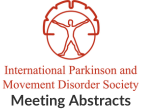Concurrent SCA3 and SCA10 in a young man with ataxia and prominent dystonia
Objective: To describe a case of a man with pathogenic repeat expansions in both ATXN3 and ATXN10. Background: SCA3 is caused by abnormal polyglutamine repeat…A Novel CACNA1A Nonsense Variant [c.6481C>G; (p.Arg2161Gly)] Causing Spino Cerebellar Ataxia Type 6 (SCA6)
Objective: To describe a new missense variant found in a 67 years old woman with progressive ataxia causing a phenotype compatible with SCA 6. Background:…CAPN1 mutations are more common than expected in patients with hereditary spastic paraparesis
Objective: To report 4 families with hereditary spastic paraparesis due to CAPN1 mutations. Background: Some years ago, CAPN1 mutations have been described as a cause…Ataxia and action myoclonus with biallelic mutations in ATP13A2 gene
Objective: Here we report a patient with late-onset ataxia-myoclonus syndrome harboring mutations in the ATP13A2 gene. Background: Mutations in ATP13A2 gene have been causally associated…Novel Recessive Mitochondrial Mutations Causing Leigh’s Syndrome and Movement Disorders
Objective: Describe discovery of novel mitochondrial mutations causing ataxia and dystonia syndromes with occurrence in childhood. Background: An African-American man at 5 years old subacutely…Adult onset of Dandy-Walker Syndrome
Objective: To identify what could be causing a full, progressive cerebellar syndrome on a previously healthy 40 year old woman. Background: A 40-year old woman…Reclassification of variant c.5825C>T and clinical evidence of variant c.3955_3958dup in a Peruvian family with ATM syndrome
Objective: To describe a Peruvian family carrying variants c.3955_3958dup and c.5825C>T in the ATM gene. Background: Pathogenic variants at ATM gene are associated both, to…Clinical and genetic abnormalities in patients with Friedreich’s ataxia: A genotype-phenotype correlation
Objective: To examine the possibility of molecular finding affecting FRDA phenotype, we studied the clinical features and ascertained the GAA repeat sizes in FRDA patients…New pathogenic mutation in the Niemann-Pick C (NPC) Type 1 gene: Confirmation by diagnostic workup of NPC in a 41-year-old woman with idiopathic late onset cerebellar ataxia (ILOCA)
Objective: We present an instructive case of a 41-year-old woman with idiopathic late onset cerebellar ataxia. Background: Identifying the cause of idiopathic late onset cerebellar…Clinical correlation with the Genotype of Friedreich’s Ataxia (FRDA) patients in Indian population
Objective: To describe genotype-phenotype correlation in Indian FRDA patients. Background: Friedreich’s Ataxia(FRDA), an early onset rare autosomal recessive ataxia is caused by bi-allelic loss of…
- « Previous Page
- 1
- …
- 14
- 15
- 16
- 17
- 18
- …
- 28
- Next Page »
